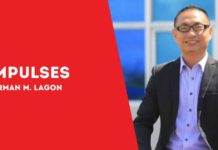[av_one_full first min_height=” vertical_alignment=” space=” custom_margin=” margin=’0px’ padding=’0px’ border=” border_color=” radius=’0px’ background_color=” src=” background_position=’top left’ background_repeat=’no-repeat’ animation=”]
[av_heading heading=’EDITORIAL’ tag=’h3′ style=’blockquote modern-quote’ size=” subheading_active=’subheading_below’ subheading_size=’15’ padding=’10’ color=” custom_font=”][/av_heading]
[av_textblock size=” font_color=” color=”]
Reinforcing Filipino identity
MONDAY last week was a national holiday in observance of the Muslim celebration of Eid’l Adha. In declaring the holiday, the Palace wanted to foster goodwill between Muslim Filipinos and Christian Filipinos. Eid’l Adha or Feast of Sacrifice is one of the two greatest feasts of Islam.
It is good that our President is from Mindanao where most Muslim Filipinos are concentrated. Though President Duterte is not a Muslim, he is a Mindanaoan and our Muslim brethren have a special place in his heart. He is fostering goodwill among all of us.
But the government can do more than just declaring holidays. To promote greater appreciation of the contributions of the Moro people to the country’s history, why not include Moro history, culture and identity studies as an elective subject in the college curriculum? This way, we can provide the youth a broader perspective of their past, reinforcing Filipino identity. We also provide deeper knowledge and understanding of the centuries-long historical and cultural heritage of both the Moro people and the indigenous peoples or what we call the Lumads in Mindanao.
The integration and mainstreaming of the history of our Islamic brothers and sisters and the Lumads in higher educational institutions can promote national unity. Moro history, culture and identity studies in the higher education curriculum can highlight the positive relations between Muslims and Christians, including shared origins and other points of commonality even before the arrival of Islam and Christianity.
Such subject can also include the specific character of Mindanao as an island, including the peculiarities of the different Moro and Lumad ethno-linguistic groups, and historical interactions among the people of Mindanao – Christian settlers and their descendants, the Moros or Muslims, and the Lumads or indigenous highlander tribes.
The history of the Bangsamoro people forms part of the backbone of the historical development of our country. It is about time we recognize the rightful place of the history and identity of the Bangsamoro in the fabric of our national history.
[/av_textblock]
[/av_one_full]







